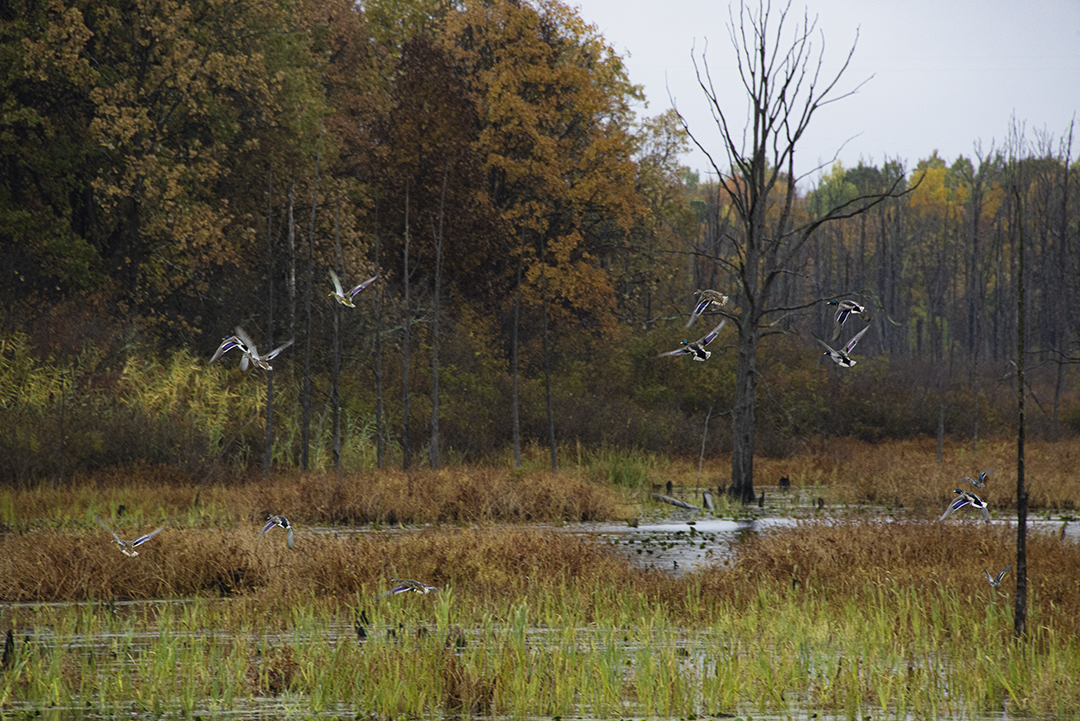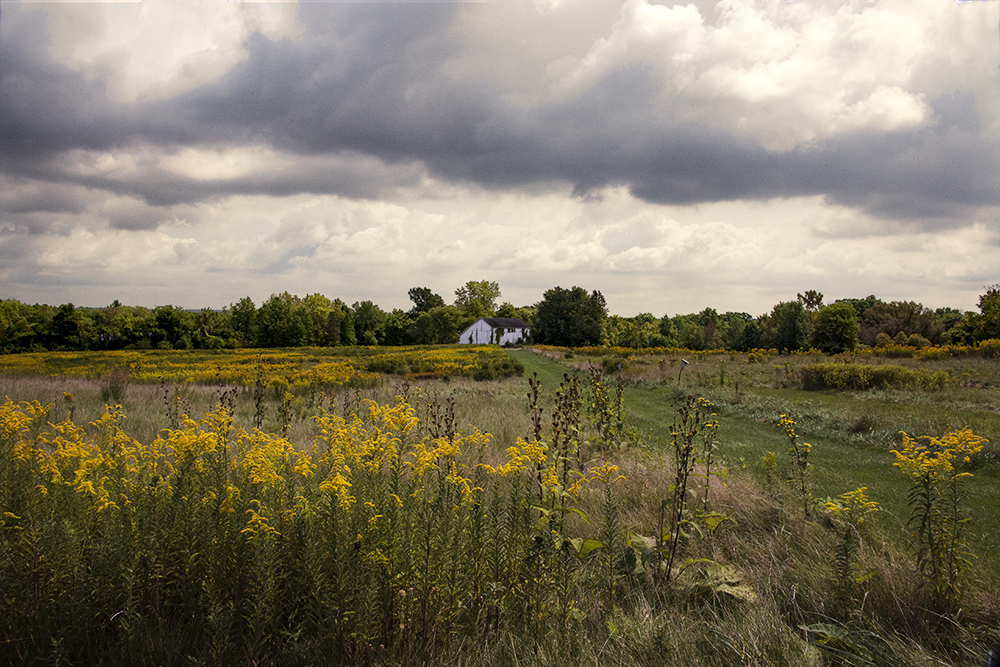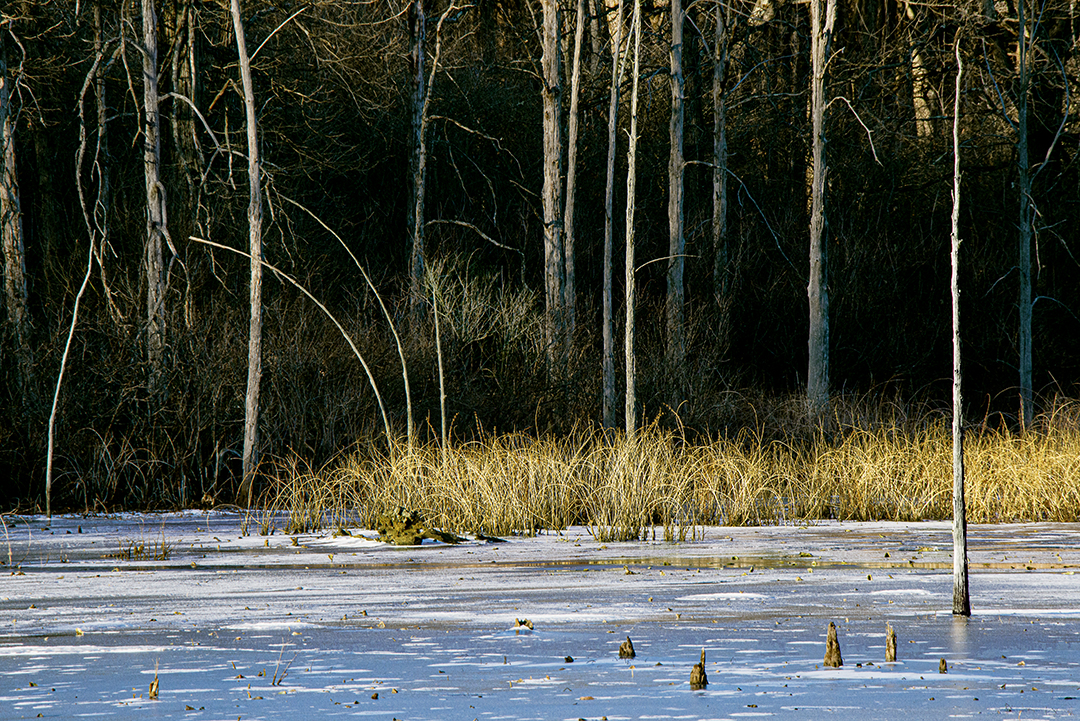
“Late to Flush Mallards”
This morning (Wednesday, Oct. 19) provided for an unanticipated closeup as migrating mallards, after holding tight through freezing rain and the season’s first trace of snow, burst into flight at the west end of the marsh . In deeper water, 100 yards to the east a pair of redheads and a raft of lesser scaups, more backsides visible than heads, were tipping and resurfacing like “drinking bird toys”, as they foraged below.






